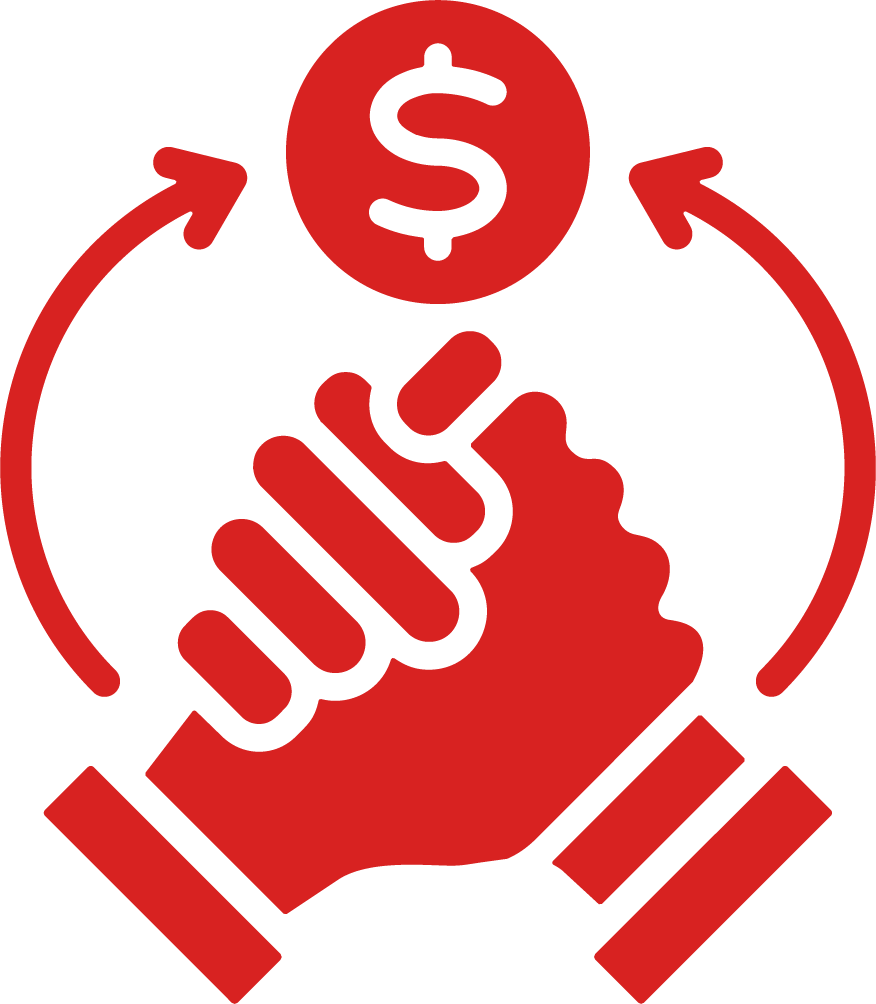Start Your Application
Visit the MySBA Certifications portal to begin your application.
A woman-owned small business (WOSB) must participate in the Women-Owned Small Business Federal Contract Program (wosb.certify.sba.gov)— which certifies eligibility for set-aside or sole-source contracts specifically designated for WOSBs before it can be awarded such a contract. Self-certification is no longer allowed; participation requires a formal process through the SBA or an authorized third-party certifier.

The business must be at least 51% owned and controlled by one or more women who are U.S. citizens, and, for economically disadvantaged WOSB (EDWOSB) contracts, must also meet specific financial criteria.

Only contracts with appropriate NAICS codes and situated in industries where women-owned businesses are underrepresented are eligible for these special procurement opportunities. (NAICS stands for North American Industry Classification System, a standardized system used by the United States, Canada, and Mexico to classify business establishments according to their type of economic activity, mainly for the purpose of collecting, analyzing, and publishing statistical data related to the business economy.)

These are reserved for WOSBs that are certified through the program.

Under certain conditions—such as when only one certified WOSB can perform the contract requirement—sole-source contracts can be awarded.
Note: General federal contracts do not require WOSB program participation, but to access the advantages of set-aside or sole-source contracts for WOSBs, program certification is required.






Visit the MySBA Certifications portal to begin your application.
Ensure your business qualifies as a small business per SBA size standards and is at least 51% owned and controlled by one or more women U.S. citizens.
Review and upload the required supporting documents (e.g., verification of ownership, control, and relevant business information).
If using a third-party certifier (like WBENC), obtain their certification and upload it through the SBA’s online system.
For assistance, you can contact your local SBA office or Women’s Business Center.



Share the facts. Talk about the disparity. Use your platform to ask why women are still being left behind.


Hold elected officials accountable. Ask them how they’re enforcing the 5% law — and why they’re tolerating failure.


Donate to support outreach, legal efforts, and public pressure. Every dollar helps fight a decades-old imbalance.
We advocate for strict adherence to the federal mandate that 5% of all prime contracting dollars go to women-owned small businesses. This is not optional. It’s the law — and it should be treated that way.
The 5% figure is outdated. Women own close to half of all businesses in the U.S. The federal government must increase the target to reflect the actual economic contribution of women entrepreneurs.
Federal agencies must be required to publicly report their contracting data — not in obscure spreadsheets or hard-to-navigate databases, but in clear, accessible formats. We support initiatives that surface who’s getting contracts, who’s being left out, and which agencies are falling short.
When voluntary compliance fails, legal action becomes necessary. We work with lawyers, watchdog groups, and policy experts to challenge unlawful contracting practices and force agencies to follow their own rules.
The language of “best value” and “past performance” too often disguises favoritism. We’re pushing for equity-focused reform in how procurement officers are trained, evaluated, and held accountable.


The SBA is the main federal agency overseeing the Women-Owned Small Business Federal Contract Program (WOSB program), which sets aside certain contracts for WOSBs and offers training on federal procurement.The OWBO manages nearly 150 local Women’s Business Centers (WBCs) that provide free or low-cost training, counseling, and guidance on certification and federal contracting processes.

Administered by the SBA, this program offers:Eligibility informationCertification guidanceListings of set-aside opportunities for WOSBs and economically disadvantaged WOSBs (EDWOSBs).Direct support includes webinars, FAQs, and one-on-one counseling through SBA district offices and WBCs.

Federally funded APEX Accelerators (formerly Procurement Technical Assistance Centers) provide free local support to help WOSBs:
Understand federal procurement
Navigate SAM.gov registration and NAICS codes
Prepare competitive proposals

WBENC is an SBA-approved third-party certifier for the federal WOSB program and provides extensive training and guidance on certification and government contracting.


SCORE is a national, SBA-partnered non-profit offering mentoring, live and on-demand webinars, and resources specifically about winning federal contracts as a woman-owned business.

Agencies like the Department of Defense have their own small business offices, offering industry-specific training sessions, procurement forecasts, and technical assistance for WOSBs.
Federal contracting is one of the largest drivers of wealth and growth in the U.S. economy. It decides who scales, who survives, and who stays small.
When women are excluded, we don’t just lose businesses. We lose jobs. We lose innovation. We lose economic momentum.
Reversing this injustice is not charity. It’s strategy. Women-owned businesses are proven drivers of inclusive hiring, local reinvestment, and long-term value creation. Funding them isn’t a risk — it’s a missed opportunity waiting to be corrected.
July 25, 2016
Giant Corporations Are Reaping Billions From Federal “Small Business” Contracts – Mother Jones
Verizon Communications (178,000 employees, $91.7B in sales) received over $107M in federal “small-business” contracts last year via the U.S. Small Business Administration (SBA).
Many large corporations qualify for SBA assistance — in 2015, 150 Fortune 500 companies received contracts intended for small businesses.
Lawsuits claim the SBA’s mission has shifted to helping large contractors circumvent the Small Business Act.
SBA was created in 1953 to “maintain and strengthen the overall economy” by giving small businesses a leg up.
“Small” varies by industry — can mean 100 to 1,500 employees and revenues up to $38.5M.
Average American business has just 17 employees, making SBA’s size caps controversial.
Federal research shows small businesses:
Employ less than half of all private sector workers.
Create 64% of new jobs.
Help counter offshoring and income inequality.
The Small Business Act is described as the largest economic stimulus program for the middle class in U.S. history.

The Small Business Administration has become perverted. At some point their mission changed to helping the government and contractors circumvent the Small Business Act.” — Lloyd Chapman

The Small Business Act is the largest economic stimulus program for the middle class in US history. And we are its protectors.” — Lloyd Chapman

Small businesses are the backbone of our economy and the cornerstones of our nation’s promise.” — Barack Obama

As an advocate for small business, SBA should strive to ensure that only eligible small firms obtain and perform small business awards.” — SBA Office of the Inspector General

The difference is much smaller between the salaries of the people at the top of a small business and the worker bees…By and large, the people at the top of the big contractors like Lockheed are in the 1 percent, whereas the people in the top of small businesses are not.” — Charles Tiefer

Verizon Communications is the largest wireless provider in the United States, with 178,000 employees and $91.7 billion in sales last year, and yet it somehow managed to wrangle more than $107 million in federal “small-business contracts” last year through the US Small Business Administration.
Verizon isn’t the only gargantuan company the SBA deems eligible for assistance. In 2015, according to a recent lawsuit by an advocacy group for actual small businesses, the SBA counted contracts with 150 other Fortune 500 companies in its fulfillment of the federal government’s small business contracting obligations.
“The Small Business Administration has become perverted. At some point their mission changed to helping government and contractors circumvent” the law.
“The Small Business Administration has become perverted,” says Lloyd Chapman, founder of the American Small Business League, which filed the suit in May. “At some point their mission changed to helping the government and contractors circumvent the Small Business Act.”
Congress created the SBA in 1953 with its passage of the Small Business Act, legislation designed to “maintain and strengthen the overall economy” by giving the small fry of the business world a leg up. The definition of “small” varies by industry, from a maximum of 100 to 1,500 employees and revenues of $750,000 to $38.5 million. (Chapman, noting that the average American business has just 17 employees, says these caps are too high.)
In any case, federal research shows that such businesses are key to supporting the middle class: Although they employ less than half of all private sector workers, they create 64 percent of net new jobs. They also tend to buck the offshoring trend and are seen as a counterbalance to income inequality because they spread wealth around to millions of entrepreneurs. “The Small Business Act is the largest economic stimulus program for the middle class in US history,” Chapman proclaims. “And we are its protectors.”
Indeed, his and other watchdog groups have repeatedly accused the SBA of failing to fulfill its original mission. Under the law, the agency is required to ensure that at least 23 percent of federal contract money goes to small businesses. The actual figure, Chapman calculates, is about 4 percent, a difference of hundreds of billions of dollars each year.
“The United States government is anti-small-business,” says Chapman, whose scrappy three-person outfit in Petaluma, California, has filed dozens of lawsuits against the SBA and other federal agencies over the past quarter-century, often compelling the agency to reveal more information about how it handles contracts. The latest suit seeks an injunction that would require the SBA to stop allegedly cooking its books when it reports on federal contracting.
SBA spokeswoman Tiffani Clements would not comment directly on the lawsuit, but argued in an email that actual misreporting of small-business contracts is rare, and not the fault of SBA employees. Corporate behemoths that acquire smaller firms may simply ignore a requirement to recertify the size of the firms they acquire (the Verizon contracts were awarded to a subsidiary, Terremark Federal Group, that Verizon purchased in 2011).
Additionally, Clements said, “There is always the possibility of human error” when the government’s contracting officers record a company’s data. (Chapman counters that if human errors were to blame, then the small firms would get misclassified as large ones, too—and nobody in his group has ever seen that happen.)
Chapman is hardly alone in his criticisms. Every year since 2005, the SBA’s Office of the Inspector General has ranked “small business contracting” as the agency’s most serious management challenge.
“As an advocate for small business, SBA should strive to ensure that only eligible small firms obtain and perform small business awards,” the OIG wrote in an October report citing “widespread misreporting…since many contract awards that were reported as having gone to small firms have actually been substantially performed by larger companies.” The report blamed reporting errors mainly on contracting officers and poor oversight of how companies calculate their size.
Perhaps the most significant way the SBA fudges the small business contracting numbers is as follows: In arriving at its 23 percent figure, the agency does not include any contracts for work performed outside the United States or in service of dozens of different federal agencies, including the Postal Service, the federal courts, the National Security Agency, and the CIA. It also excludes a large amount of contract spending related to Medicare, Medicaid, and veterans’ health. Finally, it doesn’t count contracts commissioned by state and local agencies using federal grant money.
The SBA argues that these exclusions are legal because the small business requirements apply only to “contracts” (not grants) at “federal agencies”—which the SBA defines as excluding “non-executive branch federal government entities” such as the court system. It also excludes contracts that don’t appear in the Federal Procurement Data System and those that may be deemed sensitive for “national security reasons.”
In fact, the SBA’s exclusions cover the majority of federal discretionary spending, according to an analysis by law professor Charles Tiefer, an expert on government contracts at the University of Baltimore. Tiefer calculates that, in 2011, the SBA excluded $677 billion worth of federal grants and contracts from $1.1 trillion in overall spending, which allowed the agency to claim that 22 percent of the contracting dollars went to small businesses that year.
Small businesses “are the backbone of our economy and the cornerstones of our nation’s promise.” —Barack Obama
“The SBA has a lot of trouble getting agencies like the Department of Defense to give awards to small businesses instead of the Lockheeds and the Halliburtons,” Tiefer explains, “so it wants formulas that establish the lowest possible total to lighten up its work for how much small business contracting it has to round up.”
Although genuflecting to the shrine of small business has become standard practice for politicians—President Barack Obama said in 2012 that small businesses “are the backbone of our economy and the cornerstones of our nation’s promise”—the SBA’s flaws are largely ignored by the leaders of both parties. The watchdog group Public Citizen, which examined the issue last year, blames the inaction on the revolving door between government and major contractors, and on prodigious lobbying and political donations from Fortune 500 companies.
More surprisingly, the issue has received scant attention from the nation’s best-known “small business” groups. The National Federation of Independent Business, which claims 325,000 members and chapters in 50 states, hasn’t touched it. Chapman believes the NFIB is actually a shill operation for large corporations. In 2011, it received a $3.7 million donation from Karl Rove’s Crossroads GPS, the dark-money arm of his conservative political fundraising juggernaut.
In Tiefer’s view, the outrage of Chapman’s group is spot on. Redirecting hundreds of billions of dollars to small businesses each year would do a lot to address income inequality, he told me: “The difference is much smaller between the salaries of the people at the top of a small business and the worker bees…By and large, the people at the top of the big contractors like Lockheed are in the 1 percent, whereas the people in the top of small businesses are not.”
Together we can get economic and political fairness for women and unleash prosperity for the middle class.